Dee Dee Bridgewater – More Than Just A Jazz Singer
Defining Dee Dee Bridgewater as just a Jazz singer is doing Ms. Bridgewater a disservice to the nth degree.
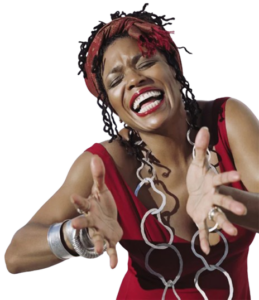
Yes, Bridgewater sings Jazz brilliantly, but she’s so much more than that. Beginning in the 70’s, Bridgewater has had a rich and varied five decade long career, and has displayed the chops to convincingly tackle Soul, Show Tunes, Gospel, and Uptown R&B among her Jazz endeavours. And, in addition, Dee Dee, a three time Grammy Award winner, (and 8 time nominee):
- Is a Tony Award winning stage actress
- In 1999 was elected to the UN as Goodwill Ambassador to The Food And Agricultural Organization and, as such, involved in the fight against world hunger
- For 13 years – from 2001 thru 2014 – hosted the NPR (National Public Radio) radio show “Jazz Set With Dee Dee Bridgewater”
- Through her Woodshed Network, continues to mentor young women in Jazz
- Was recognized by the ASCAP (American Society of Composers Authors and Publishers) Foundation in acknowledgement of her charitable contributions
- In 2017 received the NEA (National Endowment Of The Arts) Jazz Master Award**
- Holds 3 honorary degrees (from Michigan State, The Berklee College Of Music, and Elmhurst University)
- Is a member of the Memphis Music Hall Of Fame
- Is an accomplished record producer; (beginning in 1992, she has produced 13 of her 21 albums to date)
- Created her own label in 2006 (Dee Dee Bridgewater Records)
Suffice to say that, in all, Dee Dee Bridgewater is, at minimum, a superlatively accomplished artist on a number of fronts.
** Since 1982, The NEA Jazz Master Award – the highest honour given to Jazz artist – “recognizes those that have made an exceptional contribution to the advancement of Jazz”. Accordingly, Bridgewater is joined by 168 winners to date, (with other notable female artists including Ella Ftzgerald, Sarah Vaughan, Betty Carter, Nancy Wilson and Carmen McRae).
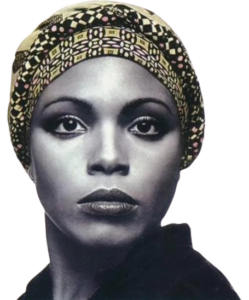
Dee Dee Bridgewater / Denise Eileen Garrett was born in Memphis – “Home Of The Blues / Birthplace of Rock & Roll” – on May 27, 1950. The origin descriptor is appropriately mentioned because although Dee Dee left Memphis at the age of 3, and was raised in Flint Michigan, the musical spirit of her original hometown would prove to be prevalent in her music appreciation, as well as her recorded and live efforts throughout the rest of her life.
Like many great artists, Dee Dee was born into a musical family.
She was initially inspired by her father, Matthew Garrett. Matthew was a prominent Jazz trumpet player on the Memphis scene, and a former DJ, (“Matt The Platter Cat”), on the legendary Memphis radio station WDIA. In addition, he taught music at Manassas High School counting, among others, sax player and future NEA Jazz Master, Charles Lloyd as one of his students.
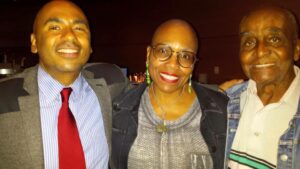
Hanging with my father, Matt Garrett and Ali Jackson at Dizzy’s Jazz at Lincoln Center.
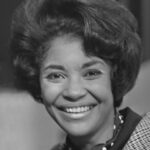
For her part, Bridgewater’s mother loved Jazz singers; and through the family record collection introduced young Dee Dee to a wide array of female artists. The first such singer to make an impression on Bridgewater was Nancy Wilson; but Bridgewater’s allegiance soon switched to Ella Fitzgerald. Dee Dee was especially taken with Ella’s scatting prowess. Dee Dee – who would later prove to be a master of scat – after countless hours studying Fitzgerald, grasped the art of scatting at a very young age.
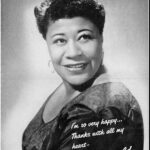
Bridgewater deemed the proclivity of utmost importance because she thought that scatting was a prerequisite for being a consummate Jazz singer. Coupled with that thought, De Dee demonstrated a clear minded ambition to achieve exemplary status as a Jazz singer. Her mother recalls that at 7 years of age Dee Dee declared to her parents: “When I grow up I’m going to be a well respected internationally known Jazz singer”. (This is a key foreshadowing in that mutual respect would prove to be paramount in Dee Dee’s world as she worked to become established in the Jazz field as well as other chosen artistic activities going forward)
Although Jazz was of primary interest, R&B played a role as well in her formative musical education.
The radio was instrumental in this education in that it provided an opportunity to listen to the classic sounds of both Memphis and Detroit. Dee Dee explained how she would listen to her father’s former station WDIA out of Memphis to catch the deep Soul that the station had to offer: “I would sneak and listen, I couldn’t it get it till 11 o’clock at night. I would put a pillow under my door and the radio under blankets and stuff, so my parents couldn’t hear it. I called it my secret garden”.
Closer to home, Motown, “The Sound Of Young America”, began to gain momentum in 1962; and like teenagers across North America, Dee Dee fell under its spell.
In the ensuing years, hearing the steady stream of hits by Motown’s star studded roster of singers moved Bridgewater to form The Iridescents, a vocal trio that was eventually scouted by the label. Although the group auditioned, Motown’s pursuit lost traction upon the realization that Dee Dee was only 16 years old.
Seemingly born for the stage, that same year, (1966), Dee Dee started guesting regularly at various local clubs. Dee Dee fondly recalls those seminal appearances: “I sang on weekends with my father as my chaperone. I was under age so I had to sit in the kitchen between sets”.
Those outings set the stage for a budding career as a Jazz singer. Also playing a role in helping shape her career was her brief time at the University of Illinois. Specifically, Dee Dee gained valuable experience fronting the university’s Jazz band. And, in doing so, Dee Dee had the opportunity to visit the Soviet Union among other locales when the university’s Jazz band director hired her for an international tour.
That aside, her education held no long term interest for Bridgewater.

While going to school, Dee Dee was performing regularly with a Jazz group – The Bridgewater Brothers, (that included future husband Cecil Bridgewater) – a diversion that convinced her to pursue music full time. It was a foregone conclusion that attending classes was no longer part of the conversation. In reflection, Dee Dee said simply: “It became easier than going to school so I dropped out”
Following her heart and her instincts, Dee Dee married Hard Bop trumpeter Cecil Bridgewater in 1970. (Dee Dee was 20 years old). Together they relocated to New York City. Cecil was a member of the Thad Jones Mel Lewis Orchestra that was based in NYC, and Dee Dee, meanwhile, sensed that opportunities may present themselves for her as well in NYC.
She was right. After guesting around town with the likes of Max Roach, Sonny Rollins, Stanley Clarke and others, it was a year later that Jones and Lewis decided that they needed a female singer. They invited Dee Dee, a last minute entry, to audition at an upcoming band club date. Dee Dee was hired after singing two songs – “Bye Bye Blackbird” and “Fly Me To The Moon” – to an enthusiastic, appreciative audience.
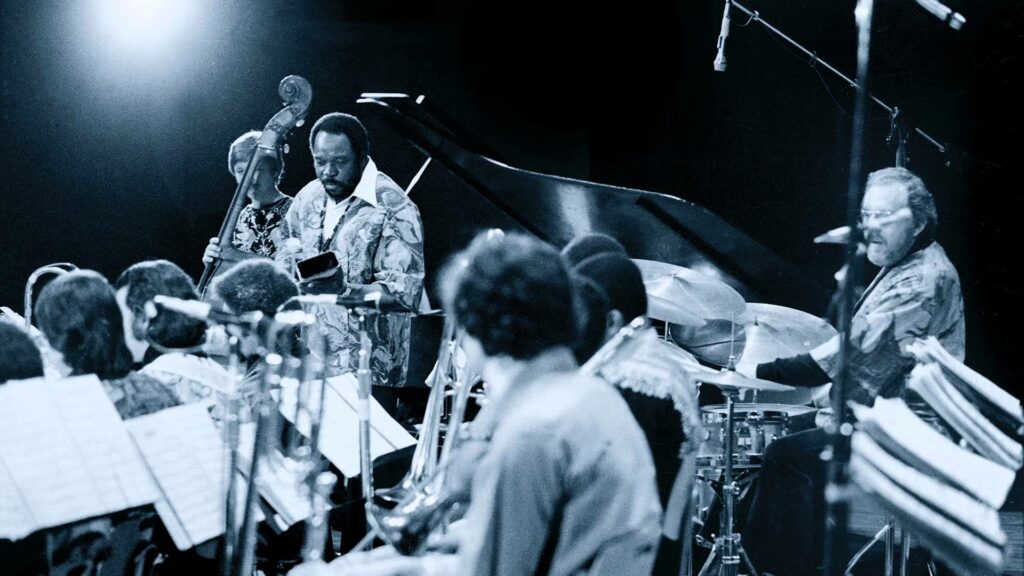
Thad Jones/Mel Lewis Orchestra
Dee Dee would stay with Jones / Lewis from 1971 to 1974 – a stint that would provide Dee Dee with her first truly professional experience and effectively kickstart Bridgewater’s career. Her time with Jones / Lewis shouldn’t be characterized as merely a stepping stone because Dee Dee, who had no formal music training, found a willing mentor in trumpeter Thad Jones. He passed on some seasoned wisdom to Dee Dee who credits Jones with teaching her everything she knew about music (“Thad was my music teacher”). Along with other advice, Jones encouraged her to develop her own style and engage with her musicians to broaden her musical education: “Stop listening to singers. You have to listen to musicians”. And he also told her how to readily involve the audience: ”Always enunciate”,,,”Always sing your melody first.”
As stated previously, Bridgewater sat in with a number of star type musicians in a 70’s NYC Jazz scene that provided a free and open environment.

The communal feeling was such that on any given night someone of notoriety would sit in with the headliner. However, one artist that wouldn’t let Dee Dee sit in was Jazz vocalist Betty Carter. But, ironically, Carter – coincidentally also a Flint native – would provide mentorship, (accomplished mostly by Dee Dee watching her intently and learning). Saying that “I was her shadow”, Dee Dee explained that everything that she knew about being an artist came from Betty Carter. To wit: “I’d say that all I am as an artist and performer came from watching Betty” “Betty taught me to be fearless”…“(Being) an artist is being an individual”
Whether sitting in with another musician or leading her own band at a steady gig at The Village Vanguard, her personal appearances put Bridgewater at the centre of the New York Jazz scene. Couple that with the release of her first album, Afro Blue, and Dee Dee’s celebrity didn’t go unnoticed. In fact, DownBeat Magazine named her as “Best New Vocalist” in 1974. Dee Dee Bridgewater had tapped into both the New York and National Jazz consciousness.
But Dee Dee, having already proven herself as a natural performer, wasn’t content with her lot of just singing Jazz.
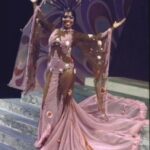
She sought to broaden her horizons, and that same year landed a part in “The Wiz”, a Broadway musical that reimagined “The Wizard Of Oz” in the context of contemporary African American culture. Bridgewater benefitted from having several songs in the role of Glinda “The Good Witch”, and was recognized with a Tony Award for “Best Supporting or Featured Actress”. (Incidentally, the musical also won a Grammy Award for “Best Musical Show Album”).
The role launched her career as a stage, film, and TV actress. Other future acknowledgements included “Best Actress” for her leading role as Billie Holiday in an off Broadway production of “Lady Day”. (In addition, Dee Dee won The Laurence Olivier Award – a “Best Actor Award” – for the same role some years later in a London production of the same play).
After stepping away from “The Wiz’ in 1976, Bridgewater was again in search of new challenges; and subsequently moved to L.A. to turn her attention to acting and entering the more lucrative Pop music field.
Over the course of the next four years Dee Dee recorded four albums that were anchored firmly in the Pop / Jazz / R&B vein. Although the move helped establish Dee Dee as a multi genre artist, it secured her only two Billboard Top 40 hits, (“Just Family” and “Bad For Me”), and she received respectable reviews for her efforts; her foray into the Pop world caused some confusion and a loss of confidence among Jazz followers and critics alike.
Not only was Dee Dee feeling the blowback from the Jazz community, but she also had to deal with the harsh realities of the entertainment industry that confronted a Black female artist. Not commanding the mutual respect that she rightfully deserved, a disillusioned Bridgewater retreated to Flint in 1985. There, while taking care of her ailing mother, Dee Dee was able to recharge, take stock of her position in life and the industry, and plan her next move.
That next move would take her to Paris the following year – her home for the next 20 years.
Dee Dee recommitted to Jazz; and, like other U.S. Jazz ex pats before and after her, found her art held in high regard both in Paris and throughout Europe. And, not only was Bridgewater scoring with her Jazz ventures – by the end of the 80’s she established herself as one of the biggest draws in Europe – but also on the acting / musical side of the equation. In addition to the aforementioned triumph with the London “Lady Day” production, Dee Dee starred in an acting and singing role in the musical cabaret “Sophisticated Ladies”, (performed in French!). Other similar roles followed opening doors in the form of voice overs for film and TV productions as well as guest appearances on numerous TV programs.
A personally rewarding new phase of her career was now firmly underway. Her Paris club appearances, her recordings, and her standout spotlights at both the San Remo and Montreaux Jazz Festivals respectively made critics sit up and take notice. Dee Dee Bridgewater was back and a force to be reckoned with. Bridgewater responded with not only more show stopping concerts but also a string of commercially successful and critically acclaimed albums. Recordings that reinforced her earned reputation as one of the most versatile vocalists of her generation.
Going forward, those albums totalled 16 in number with 8 receiving Grammy nominations, and 2 of those nominations receiving Grammy Awards
Live In Paris – nominated 1989
Keeping Tradition – nominated 1994
Love And Peace – a tribute to Horace Silver (who contributed to the album); nominated 1995
Dear Ella – a tribute to Ella Fitzgerald; Grammy Award winner 1997
Live At Yoshi’s – nominated 2000
J’ai Deux Amours – nominated 2005
Red Earth – nominated 2007
Eleanora Fagen (1915-1959): To Billie With Love From Dee Dee Bridgewater – a tribute to Billie Holiday; Grammy Award winner 2010
The above works certainly deserve to be highlighted but that’s not to overlook or discount the remainder of Dee Dee Bridgewater’s catalogue.
Case in point, her last two studio recordings Dee Dee’s Feathers (2015) and Memphis…Yes, I’m Ready (2017) deserve special mention. “Feathers”, pays homage to the history and music of New Orleans, (Bridgewater’s home since 2016). It was recorded with the New Orleans Jazz Orchestra at a studio in the heart of the Treme neighbourhood, and features Dee Dee’s unique take on selections such as “What A Wonderful World”, “St. James Infirmary”, and, (a mild surprise), “Big Chief”, a song long associated with Professor Longhair. “Memphis” reawakens Dee Dee’s spiritual connection with her first home. It was recorded at Royal Studios in Memphis, (the same studio where the timeless hits of Al Green, Ann Peebles, et al were consummated). With choices associated with the Bluff City, the record touches not only on Memphis Soul but also on Rock & Roll. Both of these releases are welcome additions and integral to the Dee Dee Bridgewater song book.
I had the distinct pleasure of catching Dee Dee Bridgewater and her Soul Symphony band at Koerner Hall in Toronto on her Memphis… Yes, I’m Ready tour.
Her performance featured a tight 6 piece band (plus 2 back-up singers), stirring arrangements, and, of course, that voice! In addition to Bridgewater’s outstanding range, she proved she can scat with the best of them. (Of note was when she faced off with her sax player for a riffing / scatting duel during a rendition of “Don’t Be Cruel”).
Like her diverse collection of recordings and her ground breaking career, the performance stood as a testament to the depth and breadth of Dee Dee Bridgewater’s artistry.
DEE DEE BRIDGEWATER PLAYLIST
From Blues For A Big Town Blog – by Rico Ferrara
